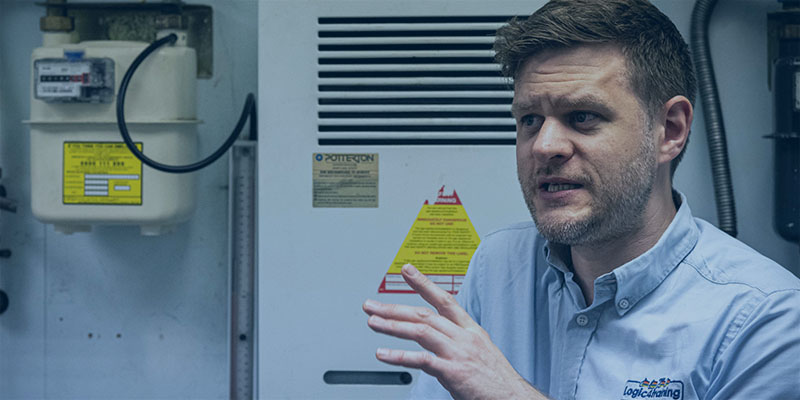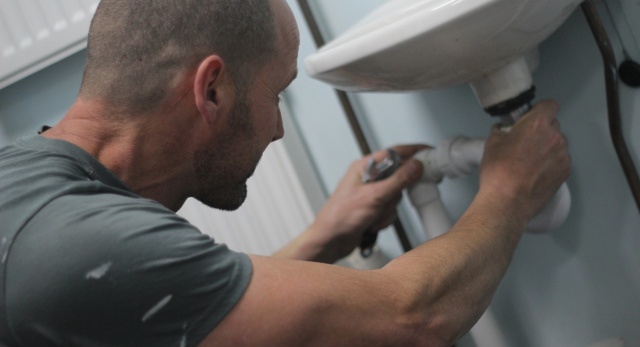Condensing at Low Flow Temperatures
We're back for the third instalment of our series on heating and boiler efficiency.
Condensing at low flow temperatures
Condensing boilers start to condense when the flue gases are below 55°C (read previous blog for more information on this).
This ‘change of state’ needs to happen at the heat exchanger so that the released latent heat can be absorbed into the heating system.
To make this possible, the water coming back to the boiler (the return) needs to be cooler than 55°C.
In the UK, a lot of heating systems are running at flow temperatures around 70°C, so to get down to 55°C on the return there needs to be a considerable drop across the system.
For example, if a boiler is set with a flow temperature of 70°C then we must lose at least 16°C across the system to enable the water to return to the boiler at less than 55°C. This is an important reason why condensing boilers have a recommended Delta T between the flow and return of 20°C.
What is Delta T?
For some of you the term Delta T (ΔT) will be new, however it is easy to understand.
Delta T refers to the temperature difference between two temperatures. On central heating systems this is in reference to the temperature difference between the flow and return.
If a heating system has a flow temperature of 70°C and a return temperature of 50°C then the Delta T, or difference between the two temperatures, is 20°C.
So, I’ve got a question for you.
If getting the return temperature below 55°C is sooo important for condensing boilers, then why don’t we just reduce the boiler flow temperature?
The problem with reducing the flow temperature:
Turning the flow temperature down will certainly increase the likelihood of the return temperature being lower than 55°C, and if we set the flow temperature at say 60°C, then possibly the return could be as low as 45/40°C (which will recover more latent heat).
However, it might not be as straight forward as that.
This is because reducing the flow temperature of the boiler also reduces the heat output of the radiators in the property, and if the system is not designed to provide enough heat at that flow/return temperature, then the house will not be warm enough during the coldest months.
Let’s consider how changes in flow/return temperatures can affect a radiators heat output.
Think of a standard 800 mm wide by 600 mm high, double panel radiator.
If this radiator has a heat output of 1000 watts (1 kW) when the flow is 70°C and return is 50°C, will the heat output increase, decrease or remain the same if the flow/return temperatures are lowered?
The answer is that the heat output will decrease.
Calculations suggest that if the flow temperature is reduced to 60°C with a Delta T of 20°C, return at 40°C, then the heat output of the radiator would reduce to around 680 watts.
So, turning down the flow temperature is a good idea, but you might have a cold house and a colder customer!!
If the system is not designed for low flow/return temperatures, then the house could get cold because the radiators cannot replenish the heat that is being lost quickly enough.
The reason why it’s important to understand all this is due to Part L of the Building Regulations.
Changes to Part L
On the 15th of June 2022, changes made to Part L of the Building Regulations came into force.
Among the changes came the requirement for all new and existing heating systems, that are being fully replaced, to be designed to a flow temperature of 55°C. This is regardless of the heat source, which means it applies to gas boiler installations.
The good news is that every installation that’s designed, installed and commissioned correctly to a 55°C flow temperature will have a return temperature lower than 55°C, so condensing boilers will be in ‘condensing-mode’, like they should be.
This will be a lot easier to do in new build properties as they are a blank canvas. New builds will be heavily insulated and, if insulated and sealed correctly, will have minimal heat loss.
For an energy efficient property, there will be no need to have gigantic radiators, even with flow temperatures less than 55°C and an outside design temperature of -2°C, due to their minimal heat loss.
Old property problems
However, for existing properties it could be a different story.…
Most of the UK housing stock is made up of homes that fall well below the insulation standards required by today’s Building Regulations.
The saving grace is that most heating systems were never designed properly in the first place, so in any given system the pipework might be bigger, and the radiators might be larger than they need to be for the flow temperatures and Delta T they are working at.
This means it is possible for some heating systems to be reduced to a 55°C flow temperature with no alterations required. But most systems will need upgrading, whether the alterations are major in minor ones. Thankfully there are courses out there to provide installers with the knowledge they need to design systems correctly (to a 55°C flow temperature or lower), which is becoming an essential tool of the heating engineer of the future.
Well, we’ve covered a lot in this blog, and we’ll pick it up again soon, so until next time:
Peace and heat….
Get a 5% discount on our Low Temperature Heating and Hot Water Systems in Dwellings Training Course – quote “Simon” when you call to book.









